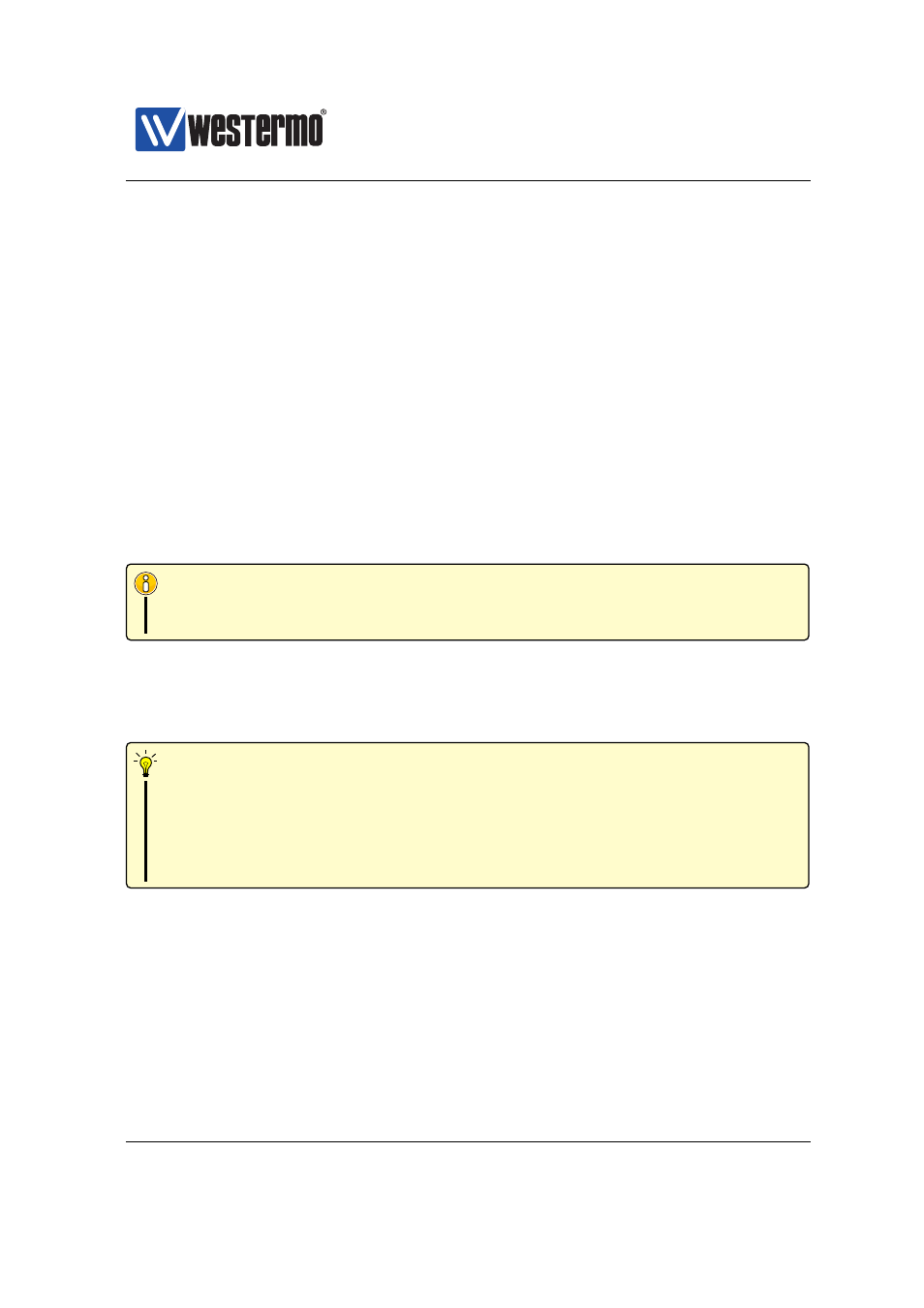Section 11.1.4 – Westermo RedFox Series User Manual
Page 229

Westermo OS Management Guide
Version 4.17.0-0
❼ Inbound rate limit: Setting the inbound rate limit is possible on DSL ports,
but is likely of less interest than on Ethernet ports, since the DSL data rates
are primarily limited by the rate of the DSL line. See also
and
❼ Outbound traffic shaping: Setting the outbound rate limit (traffic shaping)
is possible on DSL ports, but is likely of less interest than on Ethernet ports,
since the DSL data rates are primarily limited by the rate of the DSL line.
Furthermore, outbound traffic shaping in frames per second mode is not
available on DSL ports. See also
and
❼ Fall-back default-VID: The fall-back default VID setting is only of interest
for the special case when untagged packets are received over a link only
associated with tagged VLANs.
Ethernet settings for port speed/duplex mode, and MDI/MDIX mode do not apply
to xDSL ports, thus are not configurable.
Note
As of WeOS v4.17.0, enabling/disabling flow control (as described in section
) has no effect on xDSL ports.
11.1.4
Connecting to your ISP over an xDSL line
Recommendation: Use Basic Setup in Web
The simplest way to configure your Falcon unit to connect to your ISP is to
use the Basic Setup web page, see
This section is intended (1) for those who wish to configure the Falcon via
the CLI, and (2) for those looking for more background details on how to
configure Falcon as an xDSL router or bridge.
This section describes the most common steps to configure your Falcon xDSL
router to connect to your ISP. Although many configuration settings are affected,
setting up your ISP should be straight-forward:
❼ The factory default configuration of xDSL are adapted to using the Falcon as
an xDSL router.
❼ On the Falcon xDSL router, the web interface includes a basic setup page,
for easy configuration of the most common use cases, see
➞ 2015 Westermo Teleindustri AB
229
